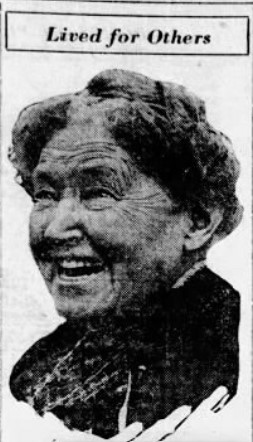
Annie was deeply loyal to her friends and her projects. She continued with the Chicago Woman’s club, which was in high gear after 1900—fighting for the vote and improving the lives of those who suffered in the ever-expanding city. She continued with the Fortnightly Club and her local Fortnightly Club, the Lyceum as it morphed into the Blackstone Library, and she continued with the Helen Heath settlement house. In 1885, she had helped found the Kenwood Evangelical Church, which built a chapel just around the corner on what might have been Hitchcock land, and she remained involved in its organization. The circle of her friends seems to have just kept expanding.
When Hitchcock Hall was ready to open in 1902, 21 years after Charles’s death, 1500 people showed up for the party in the hall. They checked out the beautiful furnishings and the elaborate frieze in the library created by Dwight Perkins and sculptor Richard Bock. Annie and William Rainey Harper stood at the head of a receiving line as people streamed in. The Tribune covered it, commenting, “many prominent people took part in the ceremonies.”
Annie herself hosted the laborers and craftsmen in a party to thank them for their work. Annie, of course, wasn’t done. She continued to take a “keen interest in the administration and equipment of the hall”—and the students. In particular, students remembered “the cheer dispensed” to any of them who were stranded in Chicago over the Christmas holidays. Every year, she invited them all to her house for an elaborate breakfast on Christmas morning.
In 1919, the students helped celebrate Annie’s 80th birthday. George H. McDonald gave a speech, saying that “Hitchcock had been a home to him and that Annie was the mother in it.” He also remembered that, during World War I, the dorm had been taken over by the Army as a barracks and Annie had removed her "treasures"--the furniture from her parents and Charles's books--and protected them in her house.
I suspect that her own finances had gotten a bit difficult by then. She’d worked out a deal with the First Trust and Savings Bank so they bought her remaining Kenwood house and land though she got to remain in the house with the people who had worked for her. Though her resources had been poured into her memorial to Charles and her parents, she was still looking for ways to change people’s lives.
I had found it puzzling to read in her obituary that she had died in Berea, Kentucky. She had no close relatives to move in with and certainly not in Kentucky. It turns out, at the age of 83, she had traveled to Berea to see if she could help Berea College. Berea had been founded before the Civil War as an integrated tuition-free education for the people who lived in the mountains of Kentucky. The state had forced segregation in 1904, so Berea had split into two schools, devoted to offering low-income students an education. As a speaker at her funeral noted, “her ardent spirit outran her failing strength” and she died on her trip. To the end, she was devoted to the idea of giving people without means access to an education.
At her funeral, her active pallbearers were students from Hitchcock Hall. The honorary pallbearers were a crowd of people—her intimate friends and representatives from all the institutions she’d touched. She was laid to rest in Oakwoods Cemetery next to Charles.
No comments:
Post a Comment